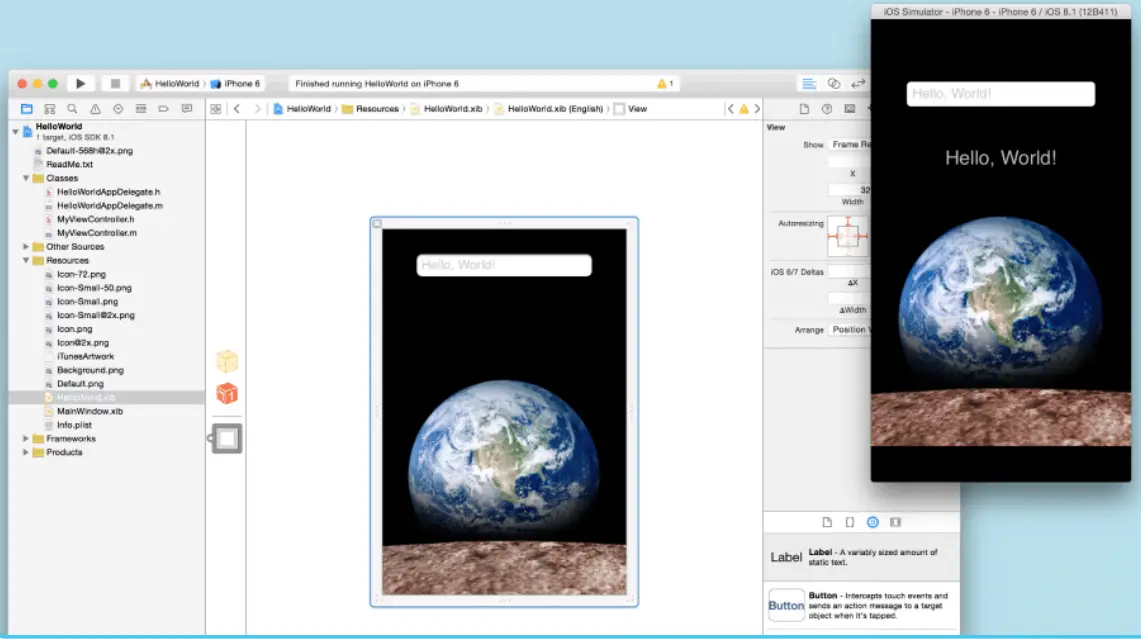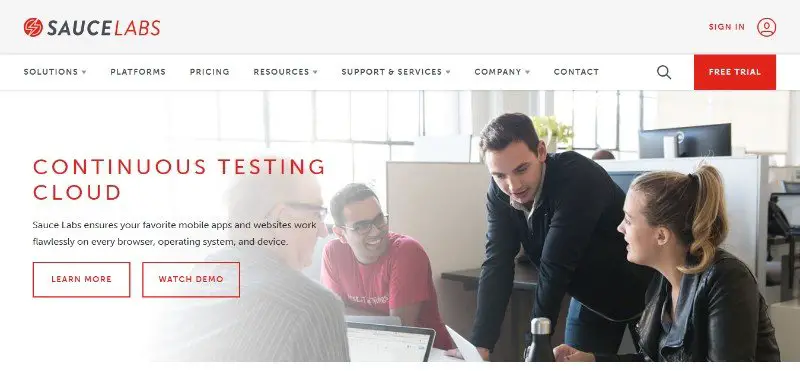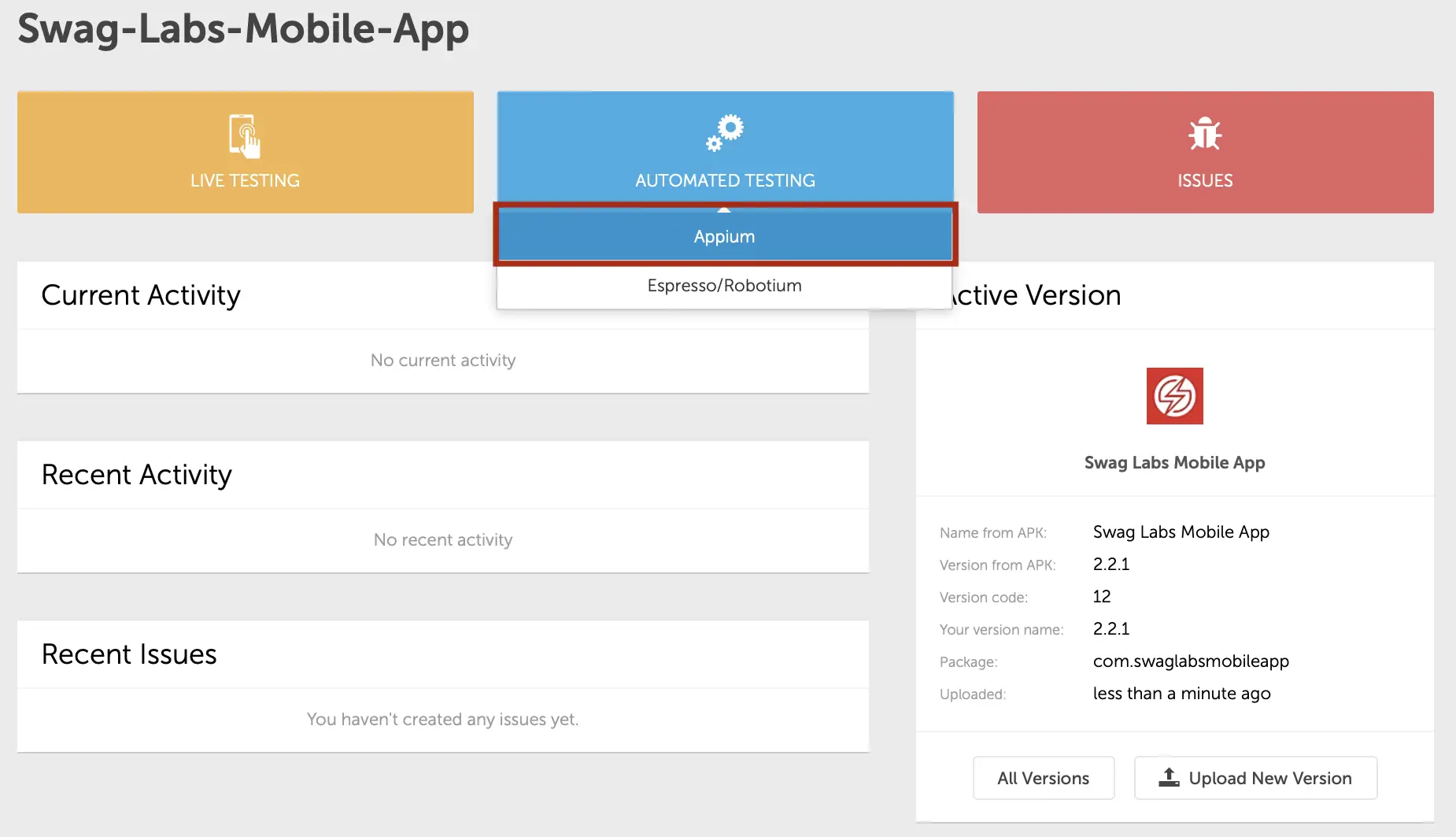Adding A Browser Provider
To begin configuring the Sauce Labs Mobile App in Provar, start by adding a new Browser Provider.
Navigate to the Test Settings view and click the Browser Providers tab. Then click the Add New button:
On the Add new Browser Provider screen, add a Provider Name and select the Sauce Labs Mobile radio button:
Add your Sauce Labs mobile server details to connect to Sauce Labs:
Once added, use the Test Connection button to verify the server details.
Testing Scope And Features
Both vendors offer cloud-hosted testing. Sauce Labs’ Continuous Testing cloud is designed to support all aspects of testing, using both simulated browsers and mobile devices and real mobile devices. BrowserStack supports functional testing, real-world condition testing and regression testing. Sauce Labs has more elements in its testing repertoire than BrowserStack, including analytics and performance, and users say its UX testing capability is more complete.
Both products require users to define how the test data maps to the GUIs involved, and users are generally comfortable with this process in each toolset. Users with specific interest in browser or mobile apps appreciate BrowserStack’s approach of different modules for different missions, but those who require both view the segmentation somewhat negatively, so it’s smart to know just what UI type the app uses.
BrowserStack has strong organizational features. Users can define teams, allocate resources by team, and — depending on the purchased plan — do parallel testing. With provided analytics, development managers can review how many tests are run and the pattern of testing, and whether the tests cover the full functionality of the UIs. Sauce Labs also has good team support and team metrics such as data on the rate of changes made, the number of changes and tests run.
What Is Mobile Application Testing
Posted Aug 11th, 2016
The number of consumer and enterprise mobile apps have grown exponentially over the last few years, leaving the end user with an humongous number of apps to choose from. But how does the user choose the app that will take up the precious space on their device? App quality is the key to any apps success and it can only be achieved through mobile application testing.
Read Also: Good Bbq Sauce For Brisket
Leading The Way In Continuous Testing
Leverages Sauces secure tunneling technology to support testing of pre-production apps, APIs and back-ends.
Provides a complete set of analysis tools, including video, screenshots, logs and metadata so you can pinpoint where your native and hybrid mobile apps fail.
Tests across web applications, real mobile devices, mobile emulators and simulators to maximize test coverage.
Enhances continuous integration workflows with better insights into each software build and test processes.
Apexon is a long-time Sauce Labs partner and has extensive experience working with Sauce Labs in enterprise environments.
Our team is well trained on the Sauce Labs product line and has developed a number of best practices using tools like Appium and Selenium to enable users to quickly automate tests for mobile and hybrid apps and write automation scripts for Android and iOS. We can accelerate your continuous integration and delivery efforts by enabling you to take full advantage of Sauce Labs unique capabilities.
What Is Mobile Application Testing And Why Is It Important

App success can be measured by the number of downloads and the positive comments, as well as a rapid implementation of new features and bug fixes. Above all, not be underestimated, word of mouth. But how can you ensure any app success?
With mobile application testing.
This practice allows you to deliver better software and helps your app to be successful by testing its functionality, usability and consistency, growing your user base.
Testing is in fact an important part of every software development process and with mobile apps it has become even more important. The growing number of mobile devices is leading to a massive fragmentation of OS, screen sizes, variations of standard OS and more. With agile processes, software testing is performed every so often to assure the best possible quality. New features and bug fixes need to be released with short intervals, so users dont loose interest and new features should not bring new bugs. Testing becomes vital for an apps survival.
You May Like: Where Can I Buy Aji Verde Sauce
Real Device Automated Test Time Limits
By default, automated tests that are running on real devices in the Sauce Labs data centers can run for up to 60 minutes. However, that duration can be affected by other factors:
- If the test is idle for more than 60 seconds, the test will timeout and end the session, so consider writing tests that do not include waits that may trigger this timeout. For Appium tests, you have the option to increase the idle timeout value to a maximum of 90 seconds using the newCommandTimeout capability.
- If you are running multiple Appium tests concurrently on the same device, consider setting the cache ID to bypass the default device cleaning process and session exit between tests.
Using Automated Mobile App Testing
Sauce Labs empowers you to run automation tests using the test instrumentation you prefer, so you can achieve total digital confidence in your app’s behavior and performance on any mobile device.
note
While “mobile testing” can also refer to testing web apps within a browser on a mobile device, the Sauce Labs mobile automated testing documentation is predominantly addressing concepts and practices related to testing a mobile app designed to be installed on a mobile device.
You May Like: Whats The Hottest Sauce In The World
Standard Requirements That Need To Be Tested
- Usability
- Performance
- Edge Cases
Other important elements when testing mobile apps are the target devices which should be chosen wisely, usually between 10 – 30 devices and relevant for your target market. Those devices should include, based on territorial coverage, the most used screen sizes and OSs platforms and versions. All the information needed can be found online, starting from screen sizes and OS.
So, as you can see, there is a lot of work to do before actually start testing. We put together regularly the top 10 devices of different countries based on their territorial coverage.
An example of top devices used worldwide would include devices with screen size between 4.0 – 5.2 with resolution between 640 x 1136px – 1080 x 1920px . Next step is to look for the market shares based on OS and manufacturer. Android , followed by Apple share the market with a majority, with the majority of the Android devices running Marshmallow and Lollipop . The majority of Apple device run iOS 10x.
For easier selection, it would also be a good idea to find the different Android market shares based on manufacturer.
With these information you can go ahead and use websites like gsmarena.com to filter out devices with the above mentioned characteristics.
Sauce Labs: Comprehensive And Continuous Mobile App Testing
Tired of powering down to run tests on your mobile apps? With Sauce Labs, you can power through instead! We offer comprehensive mobile testing that lets you get on with your work without constantly stopping and running tests.
Our continuous delivery and automated testing ensures seamless working productivity. Mobile apps are tested across emulators, simulators, and real devices.
This is the perfect solution for companies whose apps mean business!
Recommended Reading: Campbell Tomato Soup Enchilada Sauce Recipe
Add Apple Sandbox Test Cards
Apple test cards can be found on Appleâs Sandbox Testing page.
Protect Your Brand From The Risks Of A Poor User Experience
In the digital era, your brand is largely defined by the quality of the user experience you deliver to your customer. By ensuring that web and mobile applications look, function, and perform exactly as they should on every browser, OS, and device, every single time, Sauce Labs protects your both brand and bottom line from the inherent risks of a poor user experience.
03
Read Also: Tzatziki Sauce Stop And Shop
Browserstack: Easy To Use But Integrations Lag
BrowserStack offers comparable main features to Sauce Labs but focuses more on ease of use. BrowserStack also makes its integration with on-site hosting, testing and network resources crystal clear, which users find easy to set up. Development teams can combine local testing and cloud/remote testing and run it repetitively.
The Live products from BrowserStack offer an opportunity to work with a browser or mobile device in real time, useful for developer and early-stage unit testing. The Automate offerings use Selenium for test automation, to suit all aspects of testing. The testing features are good, but users think that BrowserStack is slow to add features and tool integrations.
BrowserStack users generally have a more favorable view of the platform’s documentation than Sauce Labs customers. Interestingly, as users build experience with the package, the advantage BrowserStack offers in documentation diminishes experienced users sometimes find the documentation to be superficial.
Effective Mobile App Testing Using Appium

Learn the essential concepts you need in order to understand in order to use Appium.
Whenever I think about mobile testing my head hurts. You have a kabillion devices out there, in a variety of shapes and forms. Some are Android, some iOS. You have phones, you have small tablets, you have big tablets. Some use Wifi, others communicate directly to a telecom company on a network supporting 3G, 4G, 5G? Thats only the device we havent even gotten to the application running on the device. Thats another layer of complexity. How do you test? Do you put test code directly in your app, hidden behind some backdoor and then run test results to a log? If so, thats another of headache. Now you are supporting not only the app code, but the apps test code as well. As I said, it makes your head hurt.
But, there I found a way to circumvent the pain. Use Appium.
Appium is an open source testing framework that you can use to test iOS and Android mobile applications that contain browser based UI components, native user components or a hybrid combination of both. Not only does Appium allow native or web testing, under the covers the tool uses the Selenium driver technology. Thus, you dont need to reinvent the wheel in order get productive. If you’re familiar with using Selenium, once you understand some basic concepts, youll get up and running with Appium in short order. I know, I did.
So allow me to share my experience with Appium at a high level. Heres the game plan:
Lets begin.
Recommended Reading: Hot Ones Hot Sauce Levels
Learn More About Mobile App Testing
Mobile testing is complex, and therefore you need a testing platform that can serve your needs and help you address the key challenges throughout the mobile app development lifecycle.
Sauce Labs end-to-end mobile quality solutions can help you achieve quality at speed throughout all stages of the mobile app development lifecycle , with a secure and scalable test cloud, extensive device coverage, optimized mobile beta testing, and best-in-class error monitoring and reporting.
One Of The Biggest Shortfalls: Translation
With almost 1,000 apps being added to app stores every day, there are many reasons why a user might choose one over another. Lack of language translation is one of the simplest issues, but lack of adequate testing of translation when its implemented is another. Having a good translation of your app for international markets , but dont forget other important aspects as well, such as:
- Translating app store description text
- Accounting for fonts and word lengths that vary by country and language
- Improper font size for device sizes that are popular in each country
- Color themes that have subtle meanings per country
- Knowing UI standards per country
With this level of competition, a testing strategy that includes expertise in each of these areas, for each region you plan to target, is crucial to success.
Read Also: Born To Hula Hot Sauce
To Summarize Considering All The Parameters Headspin Has Much More Value To Offer To Your Testing Efforts As Compared To Sauce Labs And Other Alternatives
HeadSpinâs testing platform enables you to bring about a flawless digital experience with potential pre-deployment, QA testing, proactive issue identification in production through automated testing capabilities deployed in the cloud or on-premise. Hence, HeadSpin serves as the best Sauce Labs alternative.
Specify Tcps For Experitest
To run your TestCases on an Android device or emulator in Experitest, specify the test configuration parameters as described in the table below.
|
Test configuration parameters |
|
|---|---|
|
DeviceName |
Enter the serial number of your Experitest device. This parameter is optional. Alternatively, you can set Desired Capabilities and use the capability Device Query introduced by Experitest. For more information on Device Query, refer to the Experitest documentation. |
|
ExperitestAccessKey |
Enter the access key of your Experitest account. To get the access key, follow the steps below: Go to your Experitest dashboard. In the upper right corner, expand the drop-down menu. |
|
Optionally, specify this parameter if you want to use a different Appium version than 1.16.0. The default Appium server version for Experitest test execution is 1.16.0-p2. |
|
In this example, you configure a test for a mobile web application in Experitest. TCPs for iOS Experitest execution |
Read Also: Bloody Mary With Tomato Sauce
Test Queuing And Concurrency
What are concurrent test runs?â
The number of concurrent test sessions in your plan tells you:
- On how many devices your test scripts can be executed at the same time, in the case of automated testing
- How many devices you can remote control at the same time, in the case of manual testing.
If I run a test and all the devices of the selected model are “Unavailable,” how long will the test be queued?â
15 minutes by default. You can increase it up to 30 minutes using a timeout capability. See See Test Configuration Options.
You can also shorten it, but putting it to less than two minutes is probably a bad idea. At less than two minutes, you may see tests not starting because the session may not have time to be initialized.
If I have a concurrency of five and I start 10 tests, will the Real Device Cloud queue five of the tests to run later?â
Yes. The five other tests will try to get the requested devices for the next 15 minutes. Thatâs the default time — it can be increased to 30 minutes through a timeout command. See Test Configuration Options.
Many Different Testing Tools
Another obstacle for developers and testers is the choice of the right tools for mobile app testing. There are so many tools out there that it is impossible to choose from, unless you have a mobile testing strategy and you know exactly what you need to make your testing plan happen. You can read about our favourite testing tools here.
Recommended Reading: Only Natural Pet Superfood Sauce
Supporting Mobile Application Testing And Continuous Integration Using Appium In The Cloud
Setting up an Appium Server in a continuous integration environment can be challenging. You need to make sure all the dependencies Appium needs are in place. You need to make sure that the emulators for the devices you want your application to support are wired into Appium properly. Also, when it comes to time to run a test session, you need to start a server instance that is dedicated to the device emulator against which your test is to run. Should a new device come into the mix, youll need to upgrade accordingly. As I said, its a lot of work.
The easier way to go about facilitating Appium test support for variety of devices is to use a service such as SauceLabs. Using an Appium Service in conjunction with a CI a tool such as Jenkins is a pretty straight forward undertaking. Figure 7 below shows the concept behind the process.
Figure 7: Jenkins works well with an Appium Service to test application code in a Continuous Integration environment.
Listing 3 below is a Java test that shows the modification required to have a cloud based application artifact tested against an Appium instance running on SauceLabs.
Listing 3: A Java test that uses a cloud based application artifact and a SauceLabss Appium server instance
As you can see from the diagram above in Figure 7, using Appium as a service for CI is a pretty straight forward undertaking once you get the parts configured correctly.
How To Choose A Mobile Test Automation Framework

A critical decision for organizations that are defining their automated testing strategy is choosing the right automated testing framework that will help their development and QA teams efficiently write and execute automated tests. The market offers a plethora of frameworks to choose from, and the decision isnt always easy.
To help you in your evaluation, we have created a comprehensive guide on how to choose the right mobile test automation framework that will provide you insight into:
-
Criteria to consider as you select a mobile test automation framework
-
Popular frameworks for automated functional testing
-
The unique benefits and limitations of each framework with a comparison view
Read Also: Secret Sauce Of Great Writing
